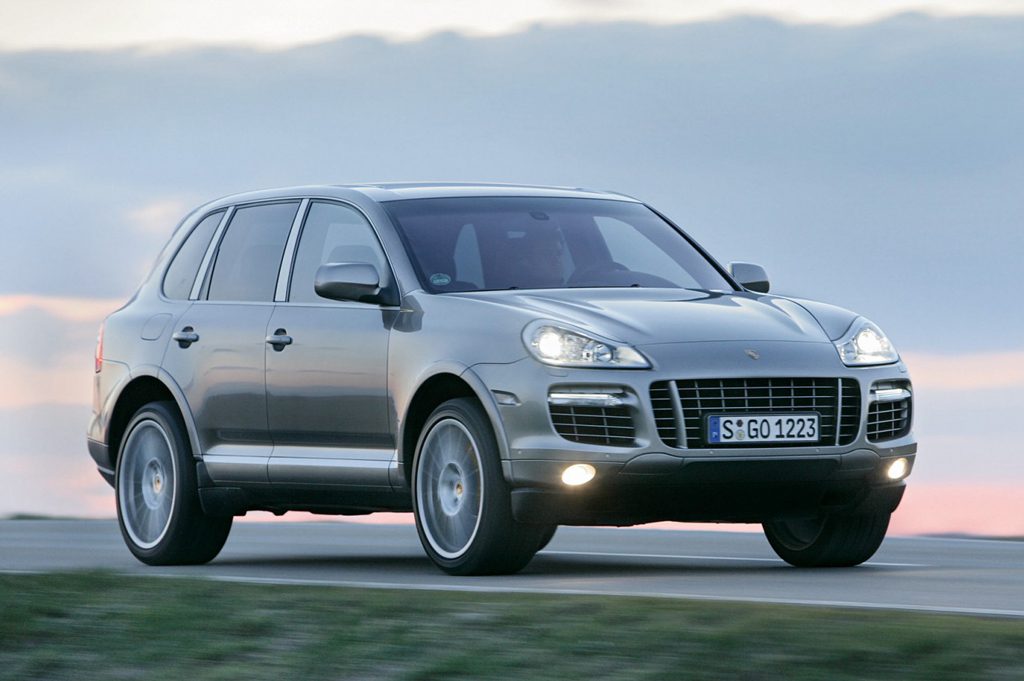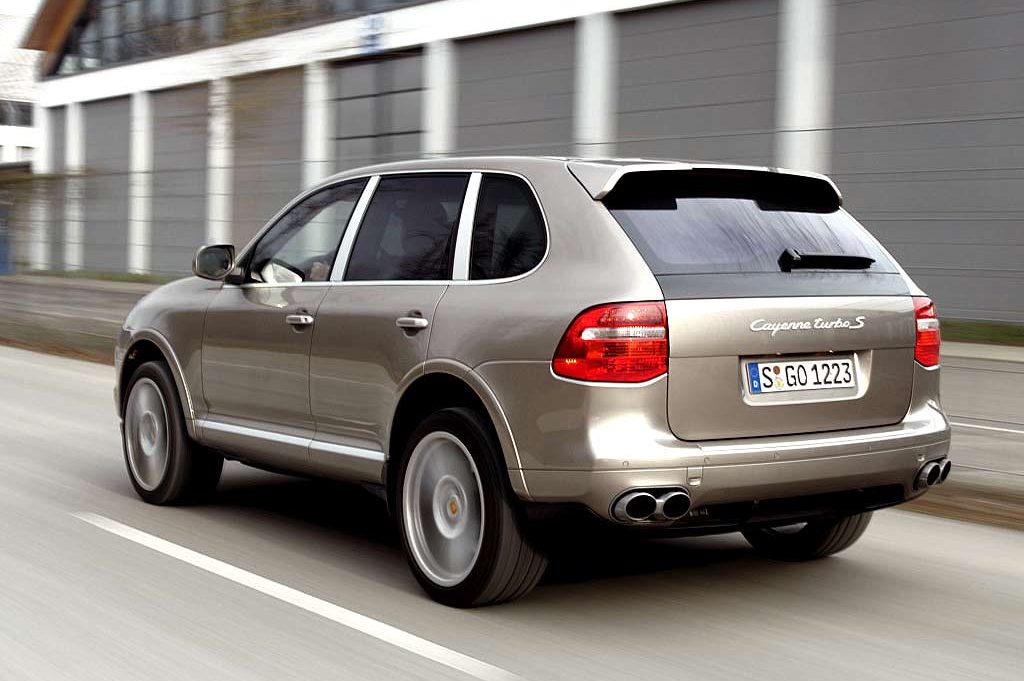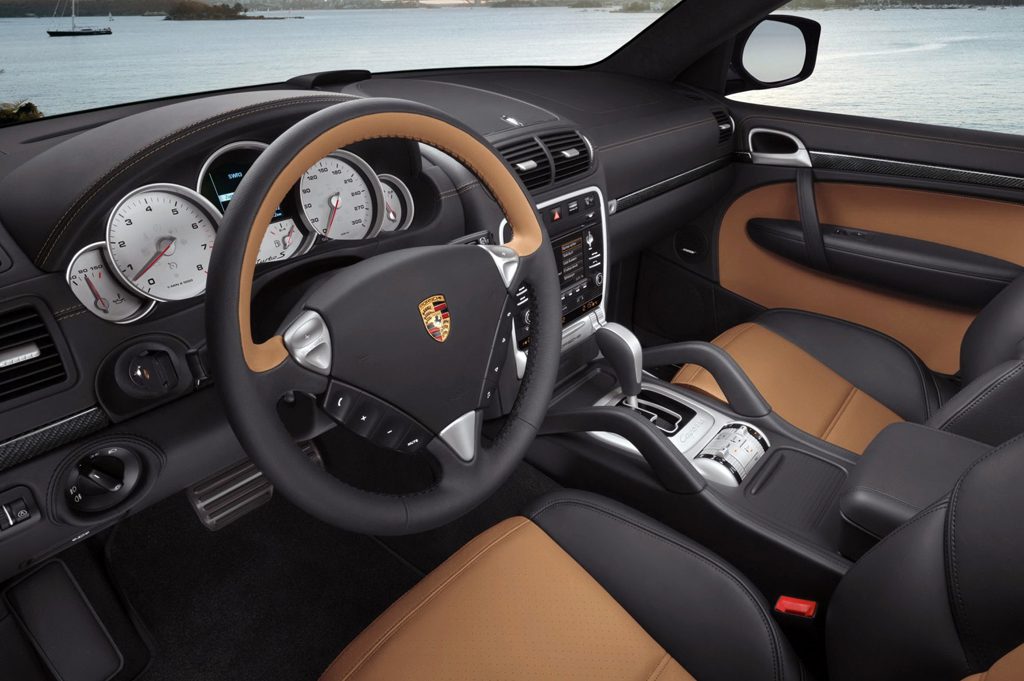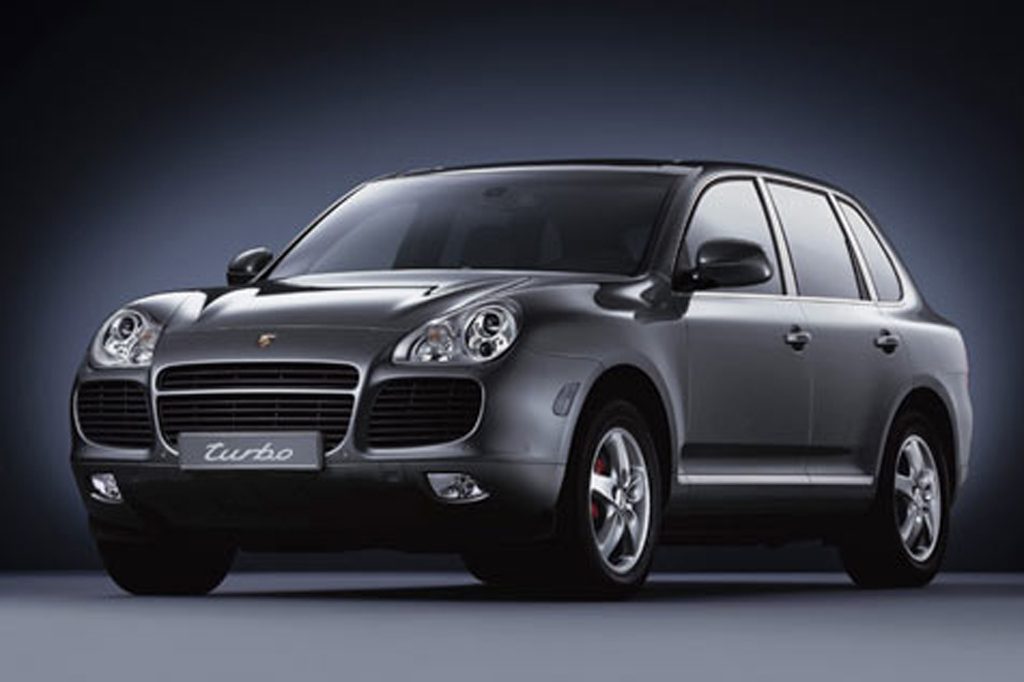| Premium midsize SUV; Built in Slovakia |
|
|
| Good condition price range: $26,500 – $77,000* |

2009 Porsche Cayenne Front

2009 Porsche Cayenne Rear

2009 Porsche Cayenne Interior

2008 Porsche Cayenne Front
| Pros: |
|
| Cons: |
|
Cayenne amounts to a unique take on the SUV formula, emphasizing sport way more than utility. What else might be expected from Porsche? However, the price for Porsche’s virtues-thoroughbred handling, blazing acceleration, and nameplate prestige-will be too high for all but an appreciative few, even as a secondhand model. Cost may become higher still if costly options have been added.
Overview
Reworked for 2008, Porsche’s midsize Cayenne received more power, revised front-end styling, and a new performance-oriented model. Cayenne was Porsche’s sport-utility vehicle and shared its basic design with the Volkswagen Touareg. Porsche’s version differed in styling and powertrains. Potential competitors included the Acura MDX, BMW X5, and Mercedes-Benz M-Class.
Base, S, GTS, and Turbo models were available. The GTS was new for 2008. Base Cayennes held a 290-horsepower 3.6-liter V6 engine. S, GTS, and Turbo versions used 4.8-liter V8s of 385, 405, and 500 horsepower, respectively. V6 models and the GTS came with a six-speed manual transmission or a six-speed automatic; the V8 S and Turbo were automatic only. Maximum towing capacity was 7,716 pounds.
All Cayennes had all-wheel drive with low-range gearing and a locking center differential. Standard safety features included antilock brakes, traction control, an antiskid system with rollover sensors, front side airbags, and curtain side airbags. A “Sport Button” that altered engine, transmission, and suspension settings for high-performance driving was standard. A driver-adjustable air suspension was standard on GTS and Turbo models, and optional otherwise. A navigation system was available, too. The GTS, which was designed for on-highway performance, added 21-inch wheels and an air suspension with Porsche’s Active Suspension Management system, which allowed adjustment through normal, sport, and comfort settings. GTS seats were upholstered in Alcantara fabric.
Yearly Updates
| 2009 Cayenne A new Turbo S flagship model, with a 550-horsepower engine, debuted this year. The Porsche Communication Management System, standard in Turbo models, now used a touchscreen and had fewer keys and menus. Porsche’s navigation system now was based upon a 40-gigabyte hard drive. For the first time, Porsche adapted the company’s Ceramic Composite Brake system to Cayennes as an option on V8 models. Sport seats with Alcantara upholstery could now be installed in any model. |
| 2010 Cayenne The 2010 Porsche Cayenne lineup gained a limited edition S Transsyberia model. S Transsyberia used the GTS’ 405-horsepower V8. The S Transsyberia added four new exterior color combination and a standard air suspension. |
